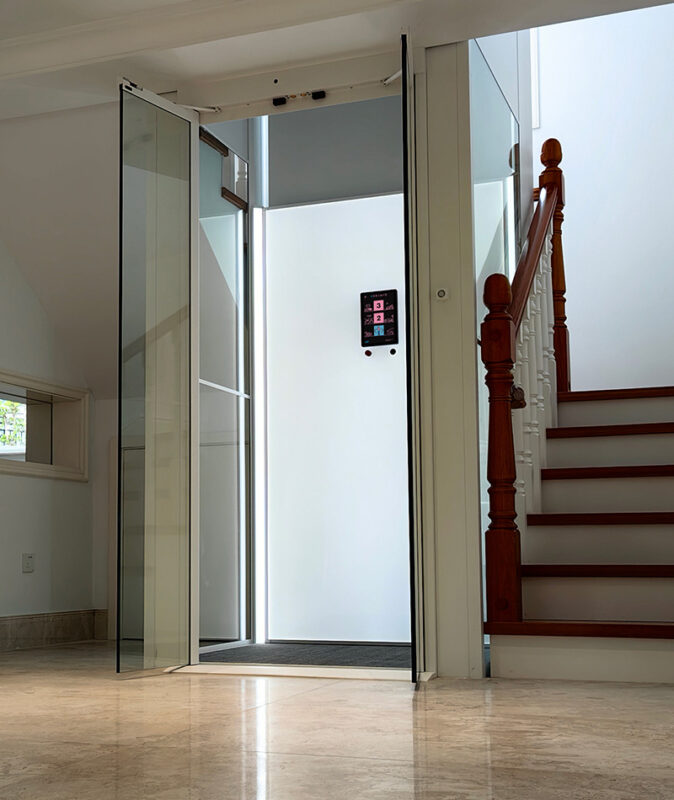
Automatic doors have become a hallmark of modern architecture, seamlessly blending convenience and innovation. Found in various spaces, from commercial complexes to residential buildings, these doors are designed to enhance functionality, accessibility, and efficiency. Understanding the technology that powers automatic doors fosters appreciation and helps make informed decisions when selecting and maintaining them.
Whether it’s a sliding door in a bustling airport or a compact solution for home elevators, the benefits of automatic doors are undeniable. They offer hands-free operation, enhanced energy efficiency, and improved accessibility for everyone, including individuals with mobility challenges.
What Are Automatic Doors?
Automatic doors are self-operating systems that open and close without manual intervention. They are powered by sensors, control systems, and activation mechanisms designed to respond to motion, proximity, or touch.
Types of Automatic Doors
- Sliding Doors: Popular in malls and hospitals, these doors slide horizontally and are ideal for high-traffic areas.
- Swinging Doors: Often used in smaller spaces, they swing open like traditional doors but with automatic activation.
- Saloon Doors: Great choice for smaller spaces like villas. Built in mechanics with a very soft and nice opening.
- Folding Doors: Compact and space-efficient, these are ideal for limited spaces like residential applications or small offices.
Primary Uses
- Commercial Spaces: Airports, retail stores, and hotels rely on automatic doors for seamless customer movement.
- Residential Settings: Advanced designs are now integrated into home lifts and entrances to enhance convenience.
- Specialized Environments: Hospitals and laboratories use them to maintain sterile environments.
A Brief History
Automatic doors date back to the 1st century AD, with the earliest recorded designs using water and steam. Modern automatic doors gained traction in the mid-20th century with the advent of electric motors and sensors. Today, these systems are ubiquitous to technological advances and increased demand for efficiency.
How Do Automatic Doors Work?
Key Components of Automatic Doors
- Sensors
- Infrared Sensors: Detect heat and motion to activate the door.
- Motion Sensors: Sense movement within a specific range.
- Pressure Sensors: Respond to weight changes on a mat or surface.
- Activation Methods
- Motion Sensors: Common in high-traffic areas.
- Push Buttons: Ideal for controlled access, often seen in lift installation.
- Proximity Sensors: Open the door when a user is within a certain range.
- Pressure Mats: Trigger door movement when stepped on.
- Control Systems
Control panels manage the door’s operations, communicating with sensors to ensure smooth opening and closing. These systems are integral to maintaining efficiency and safety.
Safety Features
- Safety Sensors: Prevent the door from closing if an obstruction is detected.
- Emergency Opening: This ensures doors open during power failures or emergencies.
Opening and Closing Mechanisms
- Sliding Doors: Operate using tracks and rollers for quiet, efficient movement.
- Swinging Doors: Use hydraulic or electromechanical systems to control motion.
- Folding Doors: Employ compact mechanisms for space-saving functionality.
Benefits of Automatic Doors
- Convenience
Automatic doors provide hands-free operation, making them essential in elevators for homes, shopping centers, and healthcare facilities. This convenience is particularly valuable for individuals with disabilities or when hands are full. - Energy Efficiency
Automatic doors reduce energy waste by opening and closing only when needed, maintaining indoor temperatures, and lowering heating or cooling costs. - Improved Accessibility
Automatic doors make buildings more inclusive by eliminating the need for manual operation. They ensure that everyone, regardless of mobility challenges, can easily enter and exit. - Enhanced Security
Automatic doors bolster building safety when integrated with security systems such as video intercoms, alarms, or access controls. This is especially useful in residential buildings, offices, and public spaces.
Advancements in Automatic Door Technology
Modern automatic doors incorporate cutting-edge technologies to meet diverse needs:
- Access Control Systems: Enable selective entry using RFID cards, biometric systems, or PIN codes.
- Video Intercom Systems: Allow real-time communication and monitoring.
- Smart Integration: IoT-enabled doors that sync with home automation systems for seamless control.
Maintenance and Troubleshooting of Automatic Doors
Regular maintenance is crucial to ensure longevity and reliable operation. Neglecting servicing can lead to sensor malfunctions, misaligned tracks, or control system failures. Here’s how to maintain automatic doors effectively:
- Schedule periodic inspections by professionals.
- Clean the sensors and tracks regularly to prevent debris accumulation.
- Test safety features frequently to ensure compliance with regulations.
When issues arise, prompt troubleshooting by trained technicians is essential to avoid prolonged downtime.
Choosing the Right Automatic Door for Your Building
Selecting the ideal automatic door depends on various factors:
- Building Type: Residential, commercial, or industrial requirements differ significantly.
- Foot Traffic: High-traffic areas need durable and fast-operating systems.
- Accessibility Needs: Consider features like push buttons or wider openings for inclusivity.
- Budget: Balance affordability with functionality to get the best value.
For example, homes with elevators for homes often benefit from sliding or folding doors, offering compact solutions tailored to residential spaces.
Conclusion
Automatic doors have revolutionized the way we interact with buildings. They offer convenience, energy efficiency, and enhanced accessibility. Their innovative technology and advanced safety features make them indispensable in both residential and commercial settings.
If you’re considering installing or upgrading your automatic door system, now is the perfect time to invest in cutting-edge solutions. For top-quality products and expert installation, trust SWIFT Lifts Australia’s go-to provider for lift installation and automatic door systems that prioritize safety, reliability, and style.
FAQs
The most common types are sliding, swinging, saloon doors, and folding doors, which are found in malls, hospitals, airports, and homes.
Sensors detect motion, heat, or proximity and automatically signal the control system to open the door.
Safety sensors, emergency opening systems, and obstruction detection ensure safe operation.
They minimize energy loss by opening only when needed and enhance accessibility for all users, including those with mobility challenges.
Consider the building type, traffic volume, accessibility needs, and budget to select the best solution.
Get In Touch
Get In Touch










